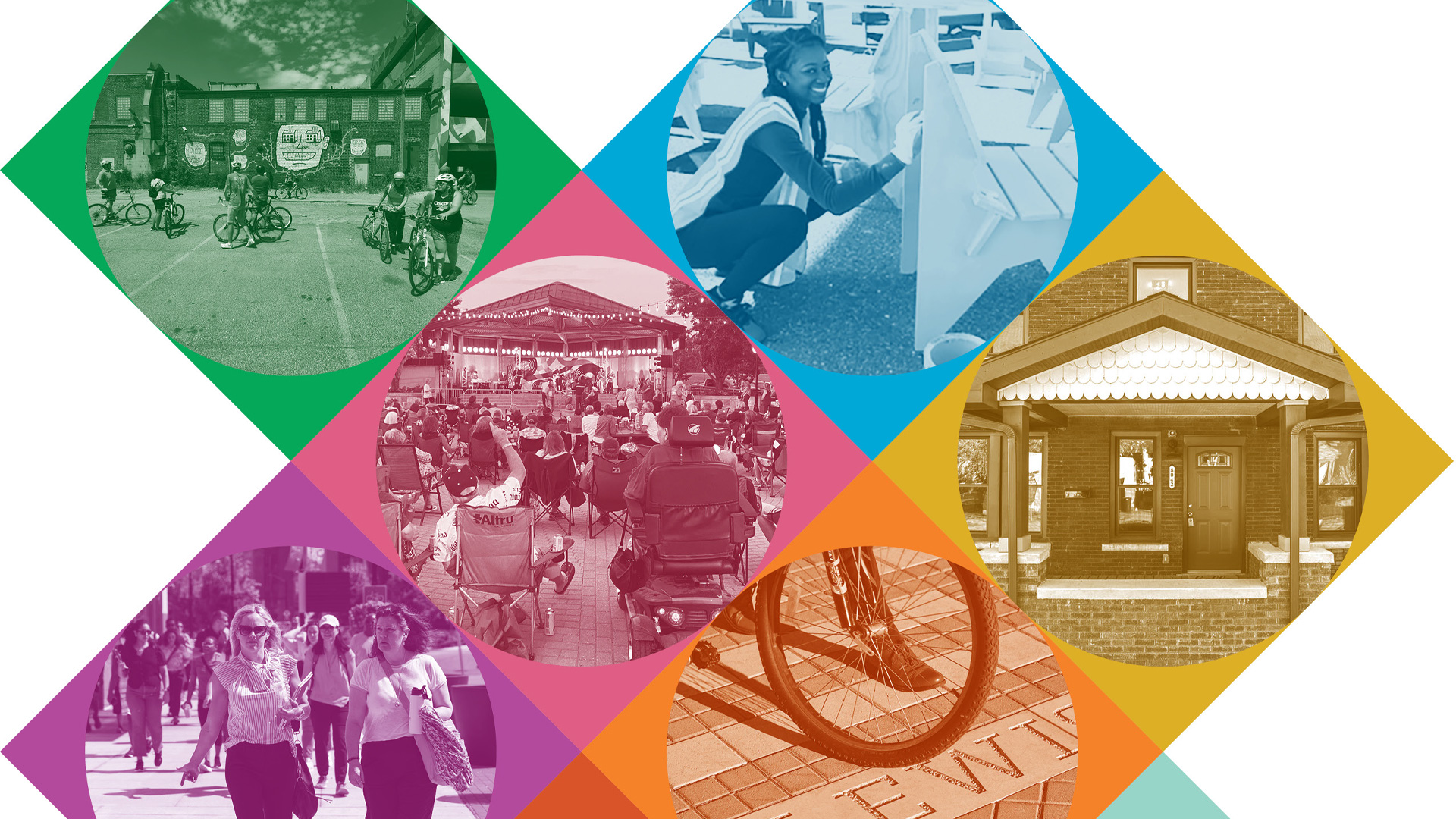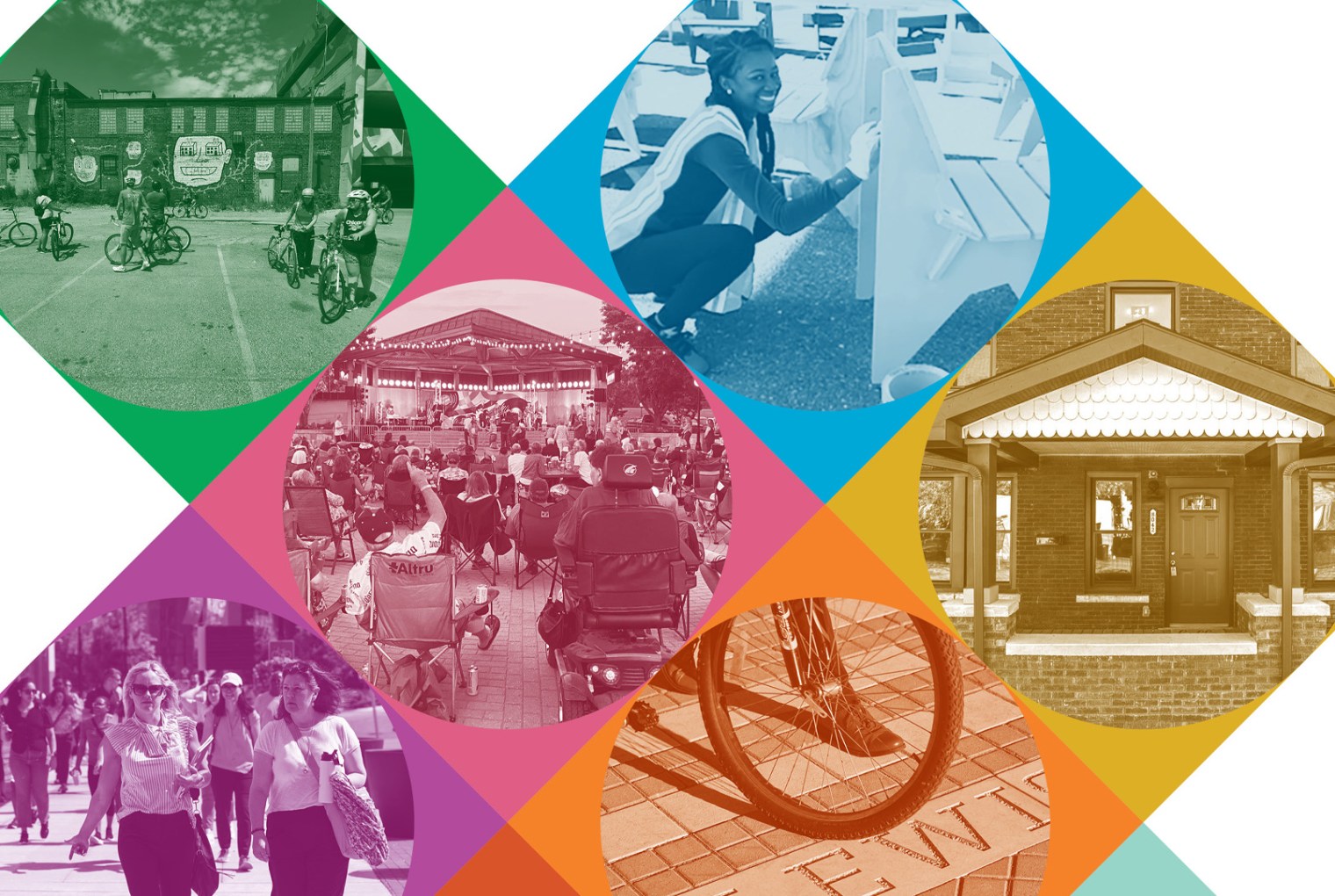
What’s moving the needle on bringing downtowns back online? Knight Foundation reviews downtown revitalization efforts across nine American cities
Investments in downtown and neighborhood revitalization are more crucial than ever as cities across America grapple with post-pandemic economic pressures, increasing displacement concerns, and aging infrastructure. A new report reflects on the impact of such investments by examining the efficacy of Knight Foundation’s grantmaking strategy in nine American cities.
In 2022, Knight Foundation commissioned HR&A Advisors to assess its philanthropic investments in downtown revitalization strategies. The report, “Investing in Revitalization Efforts,” evaluates revitalizations efforts in downtowns (Akron, Ohio; Macon, Georgia; and Saint Paul, Minnesota) as well as historically Black neighborhoods (Charlotte, North Carolina’s West End and Detroit, Michigan’s the North End) where Knight invests directly. The report also reflects on downtown revitalization efforts in Gary, Indiana; Grand Forks, North Dakota; Lexington, Kentucky; and West Palm Beach, Florida, places where Knight makes investments through local community foundations.
Investing in revitalization: unifying themes and takeaways
How can social investment help usher in new developments, increase vibrancy and activity, and preserve the unique character of the community? To answer these questions, the report evaluates nine communities’ socioeconomic shifts over time, grantmaking activities, input from local stakeholder interviews, and the results from a public perception survey. Markers of success and areas for improvement are noted. The study investigates the impact of different types of investments, including but not limited to:
- Community-led efforts to proactively combat displacement of existing residents
- Supporting broad coalition-building among community organizations
- Strengthening ties to universities
- Investing in public parks, open space, and arts/programming
HR&A Partner Judith Taylor shared, “While there were common themes across the nine downtowns and neighborhoods, each community faces its own distinct set of challenges and opportunities, defined by its specific environment, demographics, and economic conditions. Common themes are important to understand, but it’s critical to zoom into the specific context of each community and create tailored solutions. That’s why Knight Foundation’s strategy of teaming with local leaders is so effective.”
The report generates the following nine insights for investing in revitalization efforts:
- Think beyond the central business district: the COVID-19 pandemic has dealt a major blow to downtowns that exist predominantly as employment centers, such as Akron and Saint Paul. Mixed-use districts that operate as community hubs are more economically resilient and have recovered faster.
- Build broad coalitions to ensure longevity: Enacting revitalization over the long term requires sustained commitment despite organizational and political turnover. Explicit community ambitions espoused by a multiplicity of stakeholders, including city leaders and community organizations, enabled cities such as Macon to persevere and deliver long-term impacts. Conversely, investments championed by only one major player are more easily stymied.
- Proactively mitigate displacement risk: New investments come with an increased risk of displacement; social investors must act proactively to ensure that current residents can remain if they so choose. The report shows how Detroit’s North End and Charlotte’s West End are examples of where local leaders are prioritizing anti-displacement efforts
- Cluster investments: Social investments are more likely to have an outsized impact and unleash momentum when they are geographically concentrated and sustained long-term. A particularly effective strategy for increasing visitation and generating demand for new development has been to invest in Business Improvement Districts (BIDs), a strategy deployed with success in Akron, Saint Paul, and Grand Forks.
- Support multiple organizations working toward shared goals: Another effective strategy has been to distribute investments across multiple organizations that serve different functions, reflect the community’s diversity, and are all committed to a shared vision and strategy for revitalization.
- Cultivate relationships with educational anchors: Joint efforts to strengthen physical and communal connections between downtowns and campuses can be significant engines for revitalization.
- Encourage flexibility and innovation: Innovation and entrepreneurship can be fostered through flexible funding mechanisms such microgrants, seed investing, and support learning models.
- Achieving long-term impact by focusing on the public realm, including programming, arts, and infrastructure: If urban areas are to become vibrant cores, sustained financial support is needed to plan, construct, and manage existing and new public realm assets. Transformational investments can help increase foot traffic, foster community engagement, and attract new development.
- Invest in multiple avenues to revitalization: Investment strategies should align with community priorities and prioritize inclusion. Investments can be used to support economic innovation and entrepreneurism as a path to economic mobility.
Interested in learning more? Read the full report here.
Learn More
Investing In Revitalization Efforts: Case Studies from Knight Cities
Let’s discuss: revitalizing downtowns and neighborhoods
Recent Content
-
Information and Societyarticle ·
-
Artsarticle ·
-
Information and Societyarticle ·


